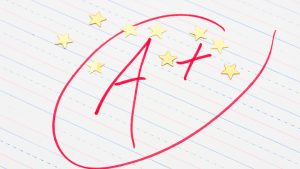
Tips in Teaching Special Needs Students

The world is a cruel place, it allows those born with a talent to excel and those without the talent to struggle in order to catch up with those who are gifted. Another example of the cruelty of the world is by giving mental disorders to individuals. These individuals who have been robbed of the cognitive function that would allow them to be considered normal had no choice but to receive such disorders from they were born. Yet even with all the drawbacks they may experience, these individuals still strive to be educated and to learn.
Some institutions have a special class dedicated to individuals with special needs, while others allow these individuals to be part of a regular class. The teacher in charge of these individuals should be knowledgeable in handling these individuals as they are more delicate than the regular student.
However, what if it is your first time dealing with an individual with special needs? Then fear not, for this article will educate you on the common learning disorders along with tips on how to teach individuals with special needs.
Common disorders one will encounter
When one refers to an individual with special needs, they are referring to an individual with one of the many mental disorders that prevent them from being considered normal. There are a variety of disorders that can affect one’s cognitive ability and hamper their learning. However, the three most commonly observed disorders are autism, dyslexia, and ADHD. Here is a quick rundown of each of the top three mental disorders observes:
• Autism
Autism, or autism spectrum disorder (ASD), refers to a broad range of conditions characterized by challenges with social skills, repetitive behaviors, speech, and nonverbal communication. Individuals with autism often have a developmental disability affecting their verbal and non-verbal communication and social interactions.
At first glance, individuals with autism look just like any regular child of their age. However, the symptoms of autism often show when they are tasked with activities that require them to socialize with others such as talking with others or maintaining eye contact. Individuals with autism are also known to have frequent repetitive behaviors.

• Dyslexia
Dyslexia is a learning disorder that involves difficulty reading due to problems identifying speech sounds and learning how they relate to letters and words (decoding). Also called reading disability; dyslexia affects areas of the brain that process language. Being a disability that affects language, individuals with dyslexia often struggle with subjects that require a lot of reading such as literature.
Even though dyslexia hampers an individual’s ability to read, an individual with dyslexia can be able to read properly. However, these individuals may have difficulties spelling the words that they have read earlier.
• ADHD
Attention-deficit/hyperactivity disorder (ADHD) is a disorder marked by an ongoing pattern of inattention and/or hyperactivity-impulsivity that interferes with functioning or development. Individuals with ADHD are notoriously known for being hyperactive which may result in disrupting the order and flow of classes.
Individuals with ADHD are also known to have a really short attention span which can hamper their ability to learn new things as they tend to stray away from a topic that does not interest them. ADHD, autism, and dyslexia are separate disorders that affect different parts of the human brain; however, it is not rare to see an individual with overlapping mental disorders.
Tips for teaching individuals with special needs
Teaching individuals with special needs takes up a lot of energy and effort as they are more difficult to handle. It takes time to get used to teaching individuals with special needs, however, there are a few key pointers to get one started on the path of being a teacher that can teach those with special needs. Here are a few tips:
1. Patience
The first tip that should be ingrained in the minds and hearts of individuals who are teaching those with special needs is to have patience. and prepare a lot of it. Patience is necessary for teaching individuals with special needs as they often learn slower than a regular student of their age.
One can often experience instances where they have to repeat the instructions multiple times in order to make the individual with special needs understand it. This takes a lot of patience to pull off. One also has to deal with other issues regarding individuals with special needs such as short attention span, and difficulties with reading.
2. Observe the individual
The first tip that should be ingrained in the minds and hearts of individuals who are teaching those with special needs is to have patience. and prepare a lot of it. Patience is necessary for teaching individuals with special needs as they often learn slower than a regular student of their age.
One can often experience instances where they have to repeat the instructions multiple times in order to make the individual with special needs understand it. This takes a lot of patience to pull off. One also has to deal with other issues regarding individuals with special needs such as short attention span, and difficulties with reading.
3. Use positive reinforcement
The first tip that should be ingrained in the minds and hearts of individuals who are teaching those with special needs is to have patience. and prepare a lot of it. Patience is necessary for teaching individuals with special needs as they often learn slower than a regular student of their age.
One can often experience instances where they have to repeat the instructions multiple times in order to make the individual with special needs understand it. This takes a lot of patience to pull off. One also has to deal with other issues regarding individuals with special needs such as short attention span, and difficulties with reading.

4. Do not allow prejudice
In a class, there will always be a few students that excel and a few that have trouble catching up. If one of the individuals that have trouble catching up is someone who has special needs, then it is important to be vigilant and not allow any prejudice amongst the individuals in the room.
The last thing an individual with special needs wants is being laughed at for their condition, as this can often lead them to be down and depressed. It is not their fault that they are born with such conditions, and it is unfair to scoff at them for having such conditions. So, as the person in charge, try to discourage any acts of prejudice towards these individuals.
5. Avoid any activities that may induce humiliation
Another tip for teaching individuals with special needs is to avoid any activities that may humiliate them. If an individual has trouble reading, then it would be a great idea to not let them read in front of the class. This does not mean that you do not wish to promote growth for the individual, but rather you are protecting them from humiliation.
Be it intentional or accidental, humiliation for an individual with special needs can seriously lower their self-esteem. These individuals already have low self-esteem to begin with, due to their condition, and humiliating them will only lower their self-esteem even more and might damage their sense of worth.
6. Speak in a kind and caring manner
One of the emotions that individuals with special needs often encounter aside from pity is anger. Anger for them not being able to do what is considered basic tasks by society. But just because they often receive this type of emotion doesn’t mean that they are immune to it.
In a world of flames, become the water that cools them down. One can achieve this by speaking in a kind and gentle manner every time one is speaking to an individual with special needs. Speaking mildly and gently will do wonders in making the individual feel safe and secure in a classroom as they will view the person in charge as mild and caring.
This is a great way to make the individual feel safe with the teacher and will build trust between the individuals. This will help them open up to the teacher and will follow instructions given to them by the teacher more willingly as they now see the teacher as an ally.
7. Adapt the way you teach
Each individual has unique characteristics, and the tips mentioned above may not work for all individuals with special needs. This is why it is important to adapt the way one teaches these individuals according to the needs and character of the individual.
Flexibility is an important trait a teacher must have if they want to teach individuals with special needs. This trait will allow them to adjust to the situation and gain control over it every time a new issue arises. This trait also portrays the level of critical thinking an individual has as they must assess a situation as best as they can and come up with a way to deal with it.
Find a tutor
Did you know that there are tutoring agencies that have tutors who are capable of tutoring children with special needs? One such agency is FamilyTutor: Singapore’s leading home tuition agency. Just request for a tutor that is capable of giving private tuition for a child that has a special need via an online inquiry here.

Carelle
Carelle is a teacher who has been through the ups and downs of the teacher and learner life. She wishes for every learner to gain educational satisfaction that will help embody the people they want to be in the future.
Tell Carelle Below What You Think About Her Post!

About FamilyTutor!
FamilyTutor is an established home tuition agency in Singapore! We match suitable home tutors for our clients not just to improve the students' academic grades, but also to build a strong rapport and meaningful relationship with the students and even the their whole family. FamilyTutor put every student in good hands!
If you need an excellent home tutor, feel free to call/WhatsApp us at +65 8777-2168! Our matching service is free!
Related Posts!
Follow Us On Facebook!
Our Service!
- Home Tuition in Singapore
- Home Tutor in Singapore
- Home Tuition Rates in Singapore
- Preschool Home Tuition
- Primary School Home Tuition
- PSLE Home Tuition
- Secondary School Home Tuition
- ITE Home Tuition
- N Level Home Tuition
- JC Home Tuition
- A Level Home Tuition
- Polytechnic Home Tuition
- University Home Tuition
- A-Math Home Tuition
- Biology Home Tuition
- Chemistry Home Tuition
- Chinese Home Tuition
- Economics Home Tuition
- English Home Tuition
- Geography Home Tuition
- H2 Chemistry Home Tuition
- Higher Chinese Home Tuition
- Hindi Home Tuition
- History Home Tuition
- IB Chemistry Home Tuition
- IP Chemistry Home Tuition
- IP Math Home Tuition
- IP Home Tuition
- JC Chemistry Home Tuition
- Literature Home Tuition
- Malay Home Tuition
- Math Home Tuition
- O Level Chemistry Home Tuition
- O Level Math Home Tuition
- O Level Physics Home Tuition
- Online Home Tuition
- Physics Home Tuition
- POA Home Tuition
- Science Home Tuition
- Tamil Home Tuition
Education Levels
National Exams
Math & Science Subjects
Language Subjects
Japanese Tuition
Korean Tuition
German Tuition
Humanities Subjects
Social Studies
Chinese Literature Tuition
About Us
FamilyTutor is an established and the people’s favourite home tuition agency in Singapore! We match a suitable tutor for you not just to improve the student’s grade, but also to build a good rapport and meaningful relationship with the student and even with the student’s whole family! With FamilyTutor, every Singaporean son & daughter is in good hands.
Contact Us
- 8777 2168
- 8777 2168
- Mon-Sun 9am-10pm (Including PH)
- contactus@familytutor.sg
- 17 Petir Road Singapore 678278



